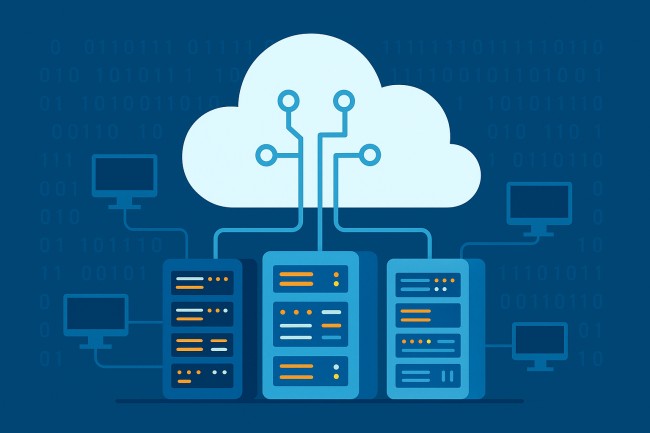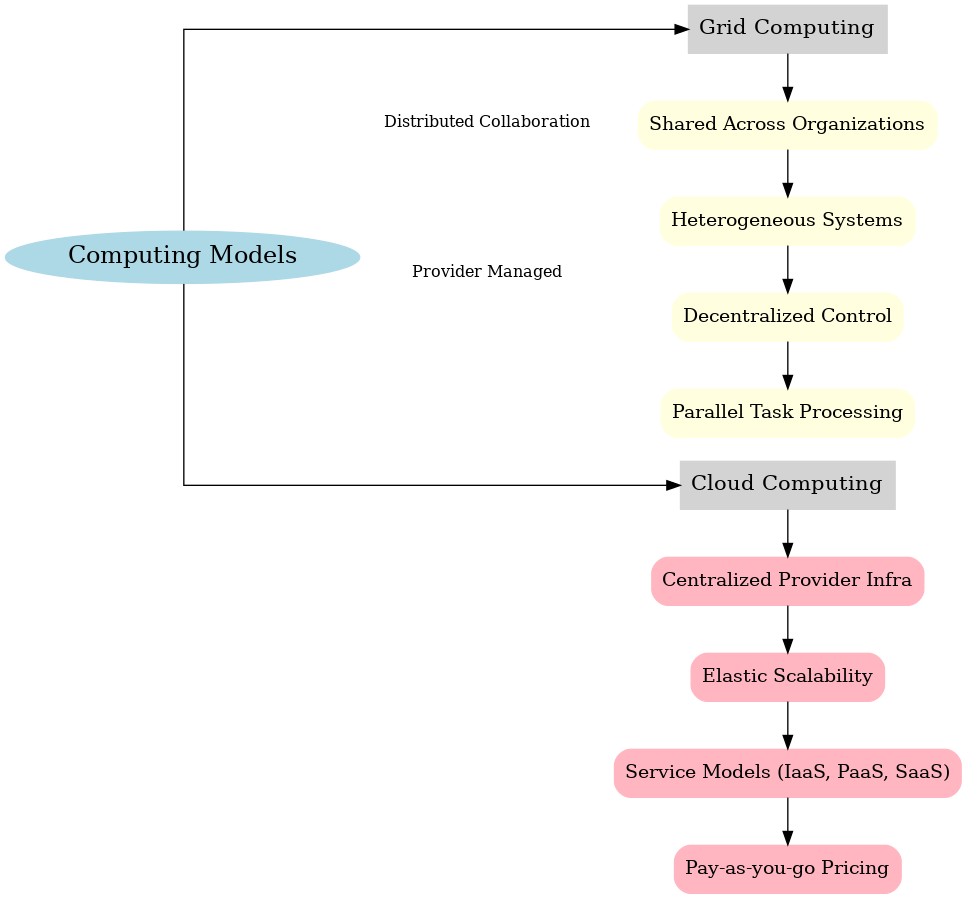
Grid Computing has long been a foundational approach to distributed processing, where interconnected computers pool their processing strength to achieve outcomes that would otherwise demand high-cost supercomputers.
Within cloud computing, this idea finds renewed purpose. Modern organizations now require infrastructure that is flexible, collaborative, and scalable.
Grid Computing provides a framework where resources from various independent systems are coordinated to solve large-scale tasks, making it one of the driving methods behind efficient computational resource use in the digital age.
Definition of Grid Computing
Grid Computing refers to the integration of multiple computer systems, often geographically dispersed, into a unified network that works collectively on large or complex computational jobs. Unlike a traditional cluster where resources are tightly bound, a grid links independent systems that may vary in operating system, architecture, and ownership.
In cloud computing, Grid Computing can be viewed as a distributed model where computational, storage, and application resources are accessed and managed collectively through a central coordinator.
The aim is not only raw computing power but also improved utilization of idle systems, cost efficiency, and collaborative problem-solving across organizations.
Core Characteristics of Grid Computing
Several traits distinguish Grid Computing from conventional distributed systems:
- Resource Sharing Across Boundaries
Independent entities contribute their computing resources voluntarily or commercially. This creates a vast pool of shared resources without the need for centralized ownership. - Heterogeneous Infrastructure
A grid does not demand uniform hardware or software. Different systems, from desktops to specialized servers, can participate, ensuring flexibility in scaling. - Decentralized Management
Unlike centralized architectures, grids rely on protocols and scheduling systems that allow each node to retain autonomy while still cooperating. - Parallelism and Task Division
Workloads are fragmented into smaller sub-tasks distributed across the grid. Parallel execution accelerates problem-solving for data-heavy or computation-intensive applications. - Fault Tolerance
Grids are designed to handle node failures gracefully. If one node becomes unavailable, tasks are reassigned to others, ensuring continuity of operations.
How Grid Computing Differs from Traditional Cloud Computing

Although both concepts overlap, subtle differences exist:
- Cloud Computing often emphasizes centralized infrastructure maintained by a provider. Users pay for computing, storage, or application services delivered on demand.
- Grid Computing focuses on collaboration between distributed, independent systems working together. The goal is the pooling of underutilized resources for collective benefit.
Where clouds deliver services (SaaS, PaaS, IaaS), grids orchestrate shared resources, frequently across organizational boundaries. In practice, cloud providers themselves sometimes employ grid frameworks internally to optimize workloads across their massive data centers.
Architecture of Grid Computing in Cloud Environments
The structure of a grid within cloud computing usually involves:
- Resource Layer
Composed of physical machines, virtual instances, storage devices, and network bandwidth. - Connectivity Layer
Defines communication protocols, authentication systems, and security measures ensuring safe interaction between nodes. - Resource Management Layer
Handles scheduling, allocation, and monitoring. Middleware software plays a crucial role in translating high-level job requests into executable units. - Application Layer
Provides users with access to applications or platforms that utilize grid resources. This may involve scientific simulations, financial modeling, or AI-driven analytics.
Examples of Grid Computing in Action
Grid Computing has been applied in both scientific and commercial sectors, often solving problems that require extensive processing.
- SETI@home
A well-known project where volunteers allowed unused computing power to analyze radio signals for extraterrestrial intelligence. Millions of personal computers formed one of the largest distributed grids in history. - Large Hadron Collider (CERN Grid)
The data generated from high-energy particle collisions is staggering. To process this, CERN established a massive grid spanning multiple countries. The infrastructure allows physicists worldwide to collaborate and analyze datasets that are petabytes in size. - Financial Market Simulations
Investment banks and financial institutions leverage grid systems to model risk, forecast market movements, and run Monte Carlo simulations that would otherwise take weeks. - Drug Discovery and Bioinformatics
Pharmaceutical research employs grids to screen molecular structures, simulate protein folding, and accelerate the discovery of potential treatments. - Climate Modeling
Meteorological organizations utilize grid-powered systems to predict weather changes and model climate scenarios with high precision.
Benefits of Grid Computing in Cloud Computing
The integration of grid principles into cloud environments offers several tangible advantages:
- Optimized Resource Utilization
Idle resources across distributed environments are harnessed effectively, reducing waste and maximizing value from existing infrastructure. - Cost Efficiency
Instead of investing in supercomputers, organizations can leverage distributed grids to handle high-performance tasks at lower costs. - Scalability
Grids can grow organically as new systems join. This scalability ensures that growing workloads can be managed without significant infrastructure overhauls. - Performance Acceleration
Tasks divided across multiple nodes are completed faster, offering near-real-time processing for complex computational problems. - Collaboration Across Borders
Institutions in different geographies can share resources, knowledge, and infrastructure, promoting global collaboration without centralized restrictions. - Reliability and Fault Tolerance
By distributing tasks, the failure of one system does not halt the entire operation. Jobs can be redirected to other available nodes.
Challenges in Grid Computing
Despite its strengths, several hurdles must be acknowledged:
- Security Concerns: Sharing resources across multiple organizations increases the risk of data breaches.
- Complex Management: Coordinating scheduling, monitoring, and authentication across heterogeneous systems demands advanced middleware solutions.
- Latency Issues: With nodes spread globally, data transfer delays can affect certain real-time tasks.
- Standardization Gaps: Lack of universal protocols sometimes creates interoperability challenges.
Grid Computing vs. Cloud Clusters
While clusters and grids are both distributed systems, their intent differs.
- Clusters operate within a tightly controlled environment, often within one organization, offering high availability and performance.
- Grids, on the other hand, emphasize resource sharing across domains. This broadens participation but introduces complexities in governance and trust management.
When integrated into cloud infrastructures, clusters often provide baseline reliability, while grids bring collaborative scale and diversity.
Modern Relevance of Grid Computing
With the advent of massive-scale cloud platforms like AWS, Microsoft Azure, and Google Cloud, some assume grid systems have lost relevance. However, grid principles remain embedded within modern architectures. For example:
- Federated Cloud Models: Multiple cloud providers or institutions collaborate using grid-like frameworks.
- Volunteer Cloud Platforms: Similar to older projects, modern initiatives encourage individuals to contribute spare resources to scientific research.
- Edge Computing Integration: Edge devices can participate in grid-style networks, contributing processing power closer to data sources.
Thus, while the terminology may have shifted, the philosophy of grid computing continues to underpin distributed cloud innovations.
Future Outlook
Emerging technologies such as quantum computing, artificial intelligence, and IoT will likely amplify the importance of grid structures. Future grids may not just link traditional servers but also connect quantum processors, edge devices, and specialized accelerators.
Advancements in blockchain based verification could address trust concerns in open grids, making cross-organization collaborations more secure. As data generation multiplies, the demand for distributed frameworks capable of handling complexity without central bottlenecks will only grow.
Conclusion
Grid Computing in cloud computing stands as an effective distributed framework where independent systems unite for collective tasks. Through examples such as CERN’s particle research or financial simulations, it demonstrates immense value across industries.
The benefits include optimized resources, cost savings, and collaborative power, balanced against challenges of security, latency, and governance.
While cloud platforms dominate today’s discourse, the principles of Grid Computing remain interwoven with modern architectures. From edge integrations to federated models, the philosophy of shared power continues to shape computing’s future.
Grid Computing proves that collaboration, even among diverse and dispersed systems, can deliver outcomes beyond the reach of isolated machines.
Also Read:

